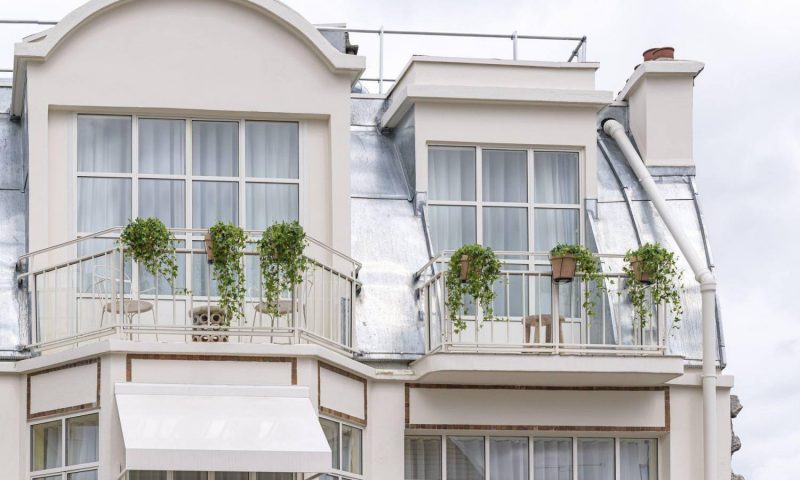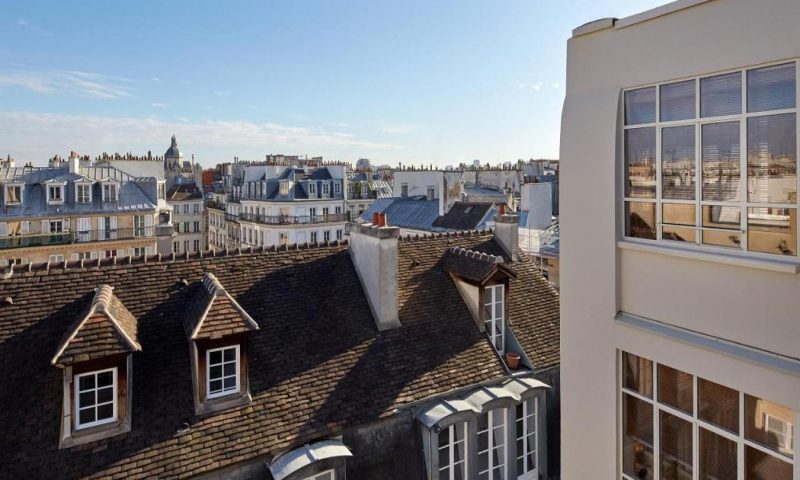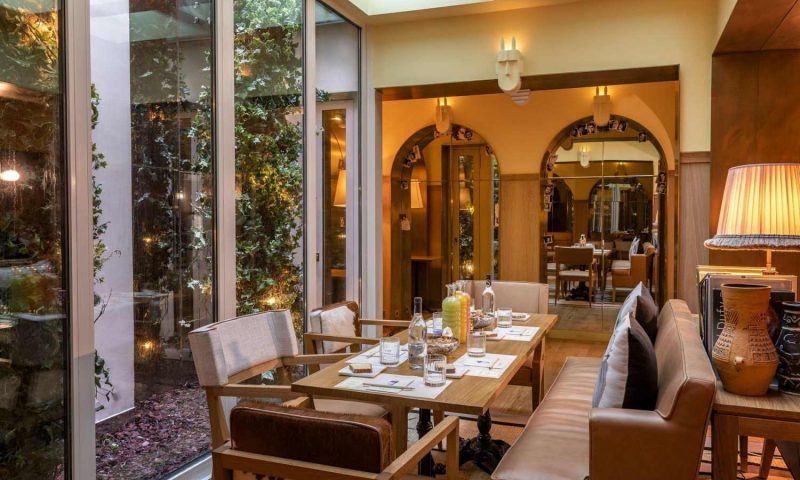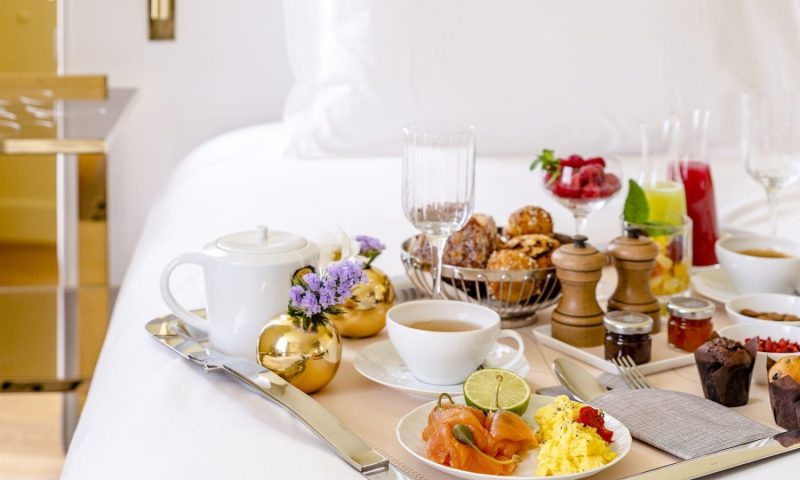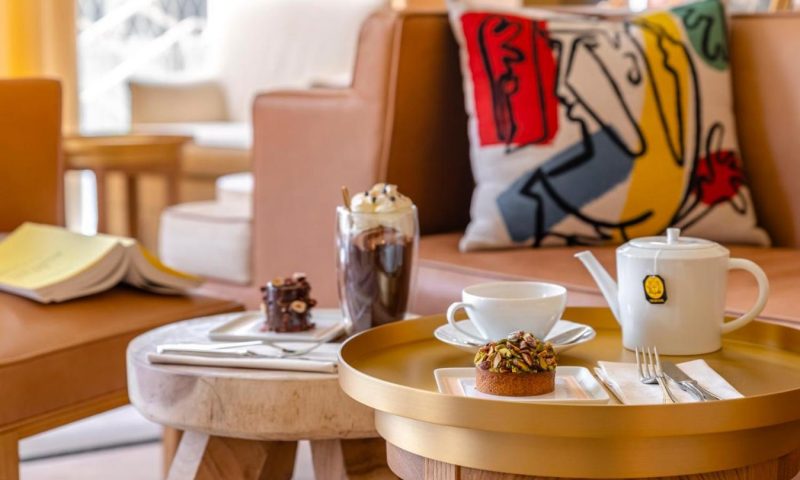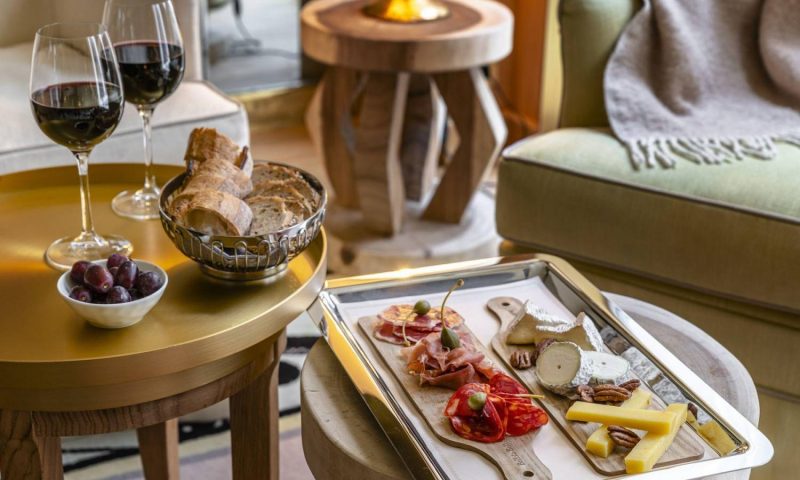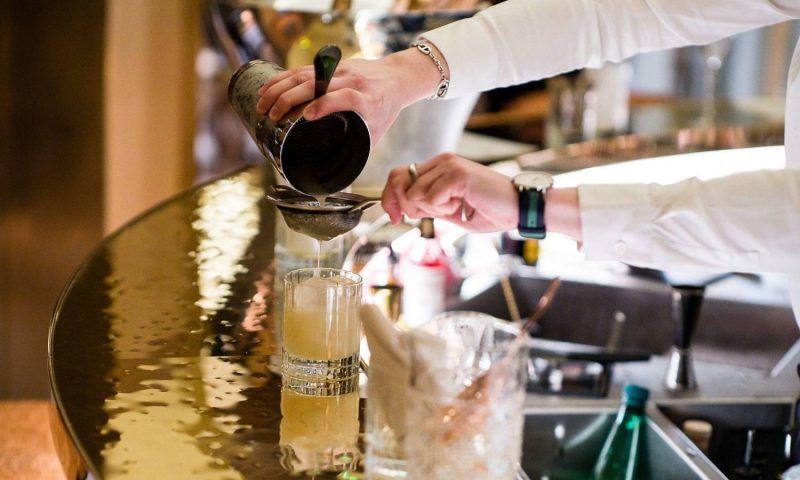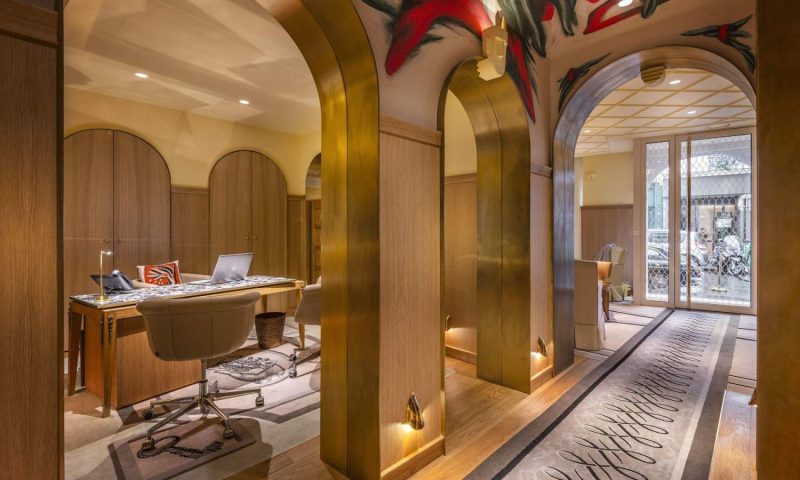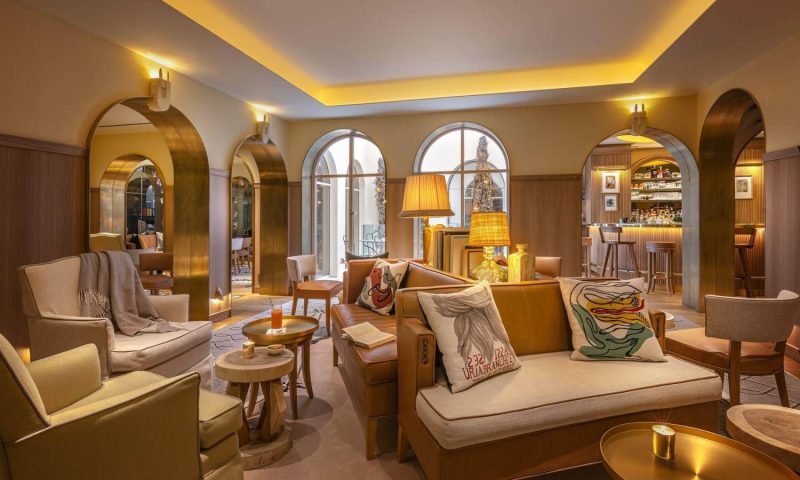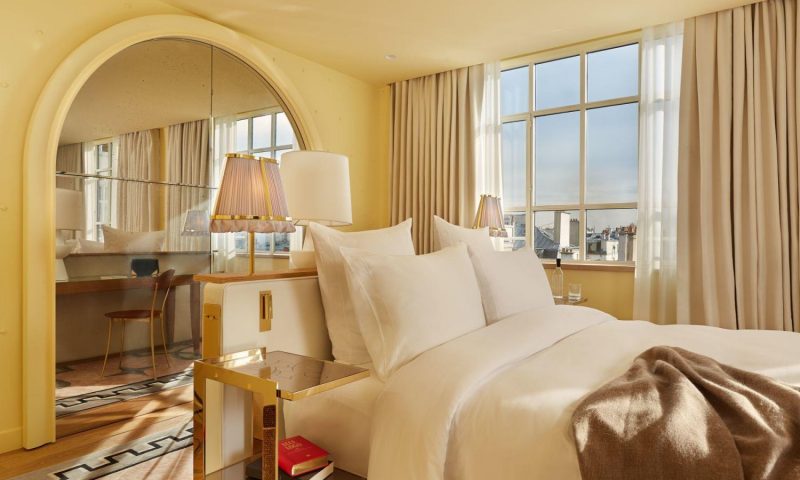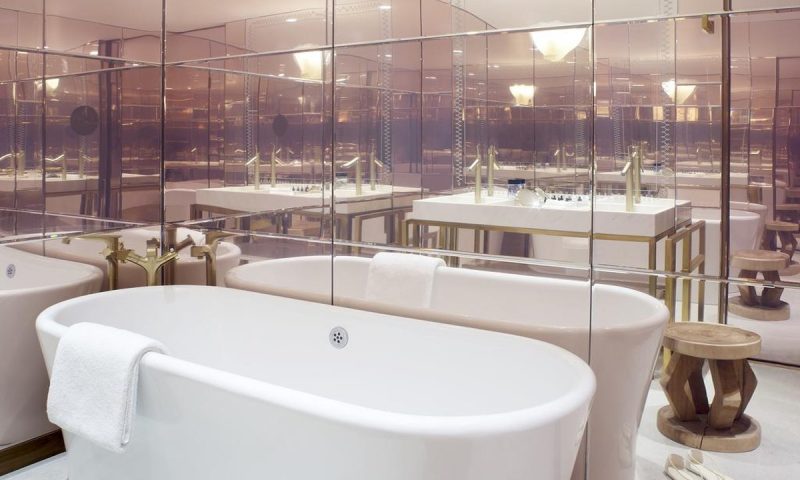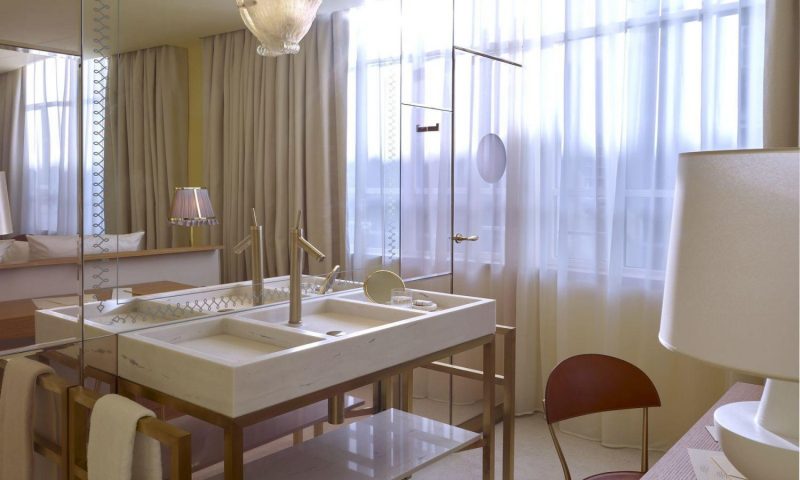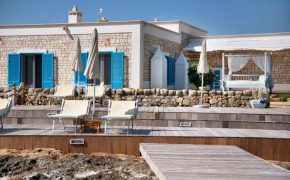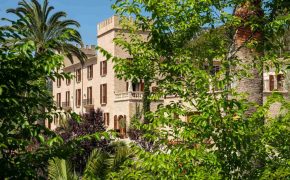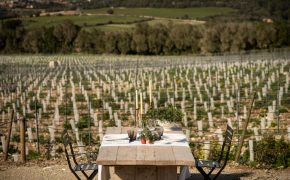Hotel 9Confidentiel, an elegant and poetic 4-star hotel imagined by the famous interior designer Philippe Starck and located in Paris’ Le Marais district. Hotel 9Confidentiel boasts 29 rooms, including 3 suites which feature panoramic views over the Parisian rooftops.
Le Marais, one of Paris’ most visited districts, is a historical gem with its own unique ambiance. Located close to Place de la Bastille, Place de la République and the Hôtel de Ville, this district with its exceptional architecture boasts numerous lavish 17th-century buildings which house famous museums such as the Paris Picasso Museum, the Maison de Victor Hugo and the Carnavalet Museum…. as well as art galleries.
Place des Vosges is the highlight of a walk through Le Marais. Rue des Rosiers, in the heart of Paris’ Jewish community, is worth a visit for its atmosphere, shopping opportunities and restaurants. Le Marais is home to a wide selection of fashion boutiques and even has its own iconic department store, BHV Marais.
Rooms & Suites
Soothing pastel tones, delightful bathrooms filled with mirrors, marble basins, oak parquet flooring… The iconic design of Hotel 9Confidentiel’s 29 rooms and suites reflects the atmosphere of the roaring twenties.
They are all designed by Philippe Starck and inspired from the colourfully crafted candy jars of the turn of the century. Each room is given a woman’s name and is an invitation to discover a sumptuous universe.
Valentine Suite
Select the Valentine Suite to enjoy extra space and panoramic views over the Parisian rooftops. This large suite allows guests to make the most of sunny days on one of its two private balconies.
The suite is equipped with a double bed (180*200) and a thick overlay mattress, a sitting area with two armchairs and a desk area. On request and according to availability, a baby bed can be added.
Marcelle Suite
The Marcelle Suite is an invitation to a quiet and relaxing getaway. For your utmost comfort, a King Size bed (180*200) and a delightfully thick overlay mattress will ensure a restful night’s sleep.
Its large bay windows overlook the Parisian rooftops and flood the room with daylight all year round. The suite features a lounging area with two armchairs and a desk.
Aurore Suite
The Suite Aurore provides an elegant setting for your next stay in Paris. Located on the 6th floor, it offers a quiet setting and a panoramic view over the Parisian skyline.
It features a double bed (180*200) and an overlay mattress to ensure you a rejuvenating night’s sleep. A lounge area with two armchairs and a desk area will enhance your experience.
Executive Rooms
For extra peace and quiet, the executive rooms provide a view of the interior patio. Spacious and intimate, they are ideal for a relaxing stay or a romantic getaway.
They are equipped with a double bed (160*200) and an overlay mattress to ensure a restful night’s sleep. The room also features a sofa or chair and a desk. Depending on availability, a baby cot can be provided upon request.
Club Rooms
The club rooms at 9Confidentiel offer you extra space during your stay in Paris. The pastel-toned interior decoration combines French elegance with artistic touches. A double bed (180*200) and a superbly thick overlay mattress are the promise of a rejuvenating night’s sleep.
The large bay windows flood the room with daylight. For your utmost comfort, they are equipped with a sofa or a chair as well as a desk or a table. Upon request and depending on availability, our teams can organize connecting rooms or add a baby cot.
The Bar
Glamourous and chic, a place of many secrets, Le Confidence bar takes guests back to the 1920s. The blend of styles and inspirations dear to Philippe Starck come together to create a timeless place. The signature cocktail recipes will delight you.
Our bar, ‘Le Confidence’, is open every evening, offering you a timeless ambiance in the heart of the Marais. Get together for an aperitif or a moment of relaxation at the end of the evening, and enjoy a delicious cocktail recipe. Opening hours: 3pm – 10.45pm
Breakfast
Start the day with our 4* hotel’s breakfast as an indulgent treat. Served in a poetic and refined setting, breakfast at 9Confidentiel is the promise of a timeless experience in the heart of the Marais district.
Baskets of pastries baked every morning on site, a wide choice of eggs, a selection of yoghurts, cheese or hams are available to hotel guests… the perfect way to start a relaxing morning.
In-room Treatments
We recommend the Pur Confidentiel treatment, created exclusively for our guests: a one-hour deep full-body massage, which soothes and relaxes you for a pure moment of wellness. A selection of manicure and pedicure options as well as a hairdressing and make-up services are also available to guests.
Family Friendly
At 9 Confidentiel, we offer a range of facilities to make your next family holiday one of total relaxation, guaranteeing parents’ peace of mind and children’s comfort. Make the most of our cosy family set-up as you relax after a long day of sightseeing in the capital.
A luxury hotel near Place des Vosges: the 9Confidentiel hotel
Set in one of Paris’ most beautiful districts, the 9Confidentiel hotel combines the comfort of a luxury hotel with an ideal location close to many symbolic Parisian sites, such as the famous Place des Vosges.
Place des Vosges, one of the highlights of Paris
An open-air library for history buffs, an architectural treasure with a thousand and one facets, or quite simply a peace haven brimming with charm… a walk around Place des Vosges will appeal to all sorts of people.
The legacy of a historic square
Place des Vosges was originally named Place Royale: its construction began in 1605, under Henri IV, who wanted to make it one of the King and Queen’s residences and have pavilions there for the wealthy bourgeoisie of the time while creating a place for celebrations and space open to the public.
However the king was unable to enjoy it as he passed away a few years before the square opened in 1612. The square lost its royal name during the period of the French Revolution and it was only under Napoleon that it took the name ‘Place des Vosges’, in tribute to the Department which was the first to pay taxes under the French Revolution.
An aesthetic gem close to Renaissance style
Listed as a historic monument, this square of 140 metres by 140 metres is a real treat for the eyes. The façades are all made from red bricks with limestone blocks and slate roofs. The King’s Pavilion and the Queen’s Pavilion are the only portions that differentiate from the buildings that they overlook.
Place des Vosges is surrounded by archways which today house shops, art galleries and restaurants. The square itself consists of a small park, Louis XIII square, split into four gardens featuring fountains (drawing water from the Ourcq) and separated by paths. In the centre an equestrian statue represents the monarch on his charger.
Hidden corners to explore and unusual stories
Besides its charming setting, favourable for walks or relaxing in the shade of one of the many linden or chestnut trees adorning the square, Place des Vosges is full of surprises and mysteries to discover.
The oldest graffiti in Paris
A surprising fact is that the oldest graffiti in Paris is found on one of the columns of Place des Vosges. It is attributed to the writer Restif de la Bretonne (nicknamed ‘Le Griffon’), who engraved it in 1764.
A typographer and urban explorer, he was in the habit of writing words, dates or thoughts as he took his walks around Paris. The only one remaining today is this inscription on pillar no.11 of Place des Vosges with the message: ’1764 NICOLA’.
Home to many famous names
Many contemporary pubic figures live or have lived on the beautiful Place des Vosges such as Dominique Strauss-Kahn and Jack Lang.
But if we go further back we find that no.1 bis was the birthplace of Madame de Sévigné; Bossuet a lodger at no.17; no.21 was the residence of Cardinal Richelieu; and Victor Hugo lived at no.6 which has now been converted into a museum. The entrance of Hotel de Sully at no.7 is a must-see.
Eglise Saint-Paul
Looking for a hotel near Eglise Saint-Paul, in Paris’ Le Marais district? Book a premium and luxury hotel which will give you all the comfort and wellness you need to make the most of your stay in the heart of the capital.
Just a few minutes’ walk from Eglise Saint-Paul, you will have plenty of time to visit this fascinating place of worship and explore Le Marais with its numerous treasures and hidden corners.
Discover Eglise Saint-Paul and its fascinating architecture
The construction of this unique church which bears the mark of the Jesuits, began in 1627 on the order of King Louis XIII.
The first mass was held by Cardinal Richelieu in 1641 in the presence of the royal family. This says a lot about the importance of this church which was for a long time one of the capital’s most important places of worship.
Eglise Saint-Paul is the work of three men: Etienne Martellange, who drew up the plans and led the work, François Derand, who was in charge of the façade and the dome, and Charles Turmel, who was responsible for the interior décor.
With its shape allowing light to enter through the top and the paintings by Paul de Lapparent, the dome over the church has a distinctive architectural character, the first creation of this type in France and still one of the few to exist today.
This type of dome became the architectural mark of Jesuit churches. This dome, reminiscent of the one in Florence, is also testimony to the Italian influence in the high Renaissance period.
Three statues can also be seen on the façade. Saint Aure and Saint Catherine are on the second level while Saint Louis is on the third level. You can also admire the wonderful clock face from Saint-Paul-des-Champs church which was destroyed in 1799.
As you enter this place of worship, you will notice many decorative items with an abundance of gold, paintings and statues adorning this church.
Many traces of history within Eglise Saint-Paul
The hearts of Louis XIII and Louis XIV were kept in this royal church until the Revolution. Although the revolutionaries did not touch the crypt—which is not open to the public—it is said that at this time the hearts of the two kings were stolen and used to make red paint.
Yet, historical fact shows that under the Revolution, Eglise Saint-Paul became a book depository and was renamed the ‘Temple of Reason’. It was only under the Concordat of 1801 that the building was given to the Church.
In 1843, Victor Hugo, who lived just a few metres away on Place des Vosges, married his wife Léopoldine at Eglise Saint-Paul. To celebrate and honour this event, he gave the church two fonts which are still present at this site.
It is a historic relic no doubt more surprising than any other as it is so rare to find something like this in a church. You will also notice graffiti from May 1871, at the end of the Paris Commune, which reads ‘La République Française ou la mort’ [The French Republic or death].
By choosing a hotel near Eglise Saint-Paul in Le Marais, you can be sure to make the most of this district which has always held a great importance in the history and the appeal of Paris.
Rue des Rosiers
We love the animated quarter, its shops, history, and beauty: Rue des Rosiers, an unavoidable street in the Le Marais quarter of Paris, is very easily accessible from theHotel 9Confidentiel. Rue des Rosiers, and more generally, the Le Marais quarter comprise the historically Jewish Quarter of Paris (also called Pletzl).
It was during the nineteenth century that the Le Marais quarter welcomed an important wave of Jewish immigration, following the persecutions and anti-Semitism in Central and Eastern Europe.
Even if the Jewish community is less represented today than in former times, due to gentrification, the footprint of the community remains, as do various incarnate details of Jewish culture: synagogues dotting the streets of the quarter, an active Yeshiva (center for studying the Torah), a hammam of Saint Paul reconstructed into a luxury boutique (at 4 Rue des Rosiers), Hebrew inscriptions here and there, specialized Yiddish delicatessens, and of course, a famous Holocaust memorial (Museum and Documentation Center).
Architecture to admire
Rue des Rosiers is equally known for the beauty of its buildings, none being of the Haussman style, a distinction in comparison to the numerous quarters in Paris. Most of the old mansions in the quarter have been transformed into museums.
In 1962 André Malraux, the Minister of Culture at the time, placed Rue des Rosiers under protection to preserve the character and splendor.
In 2005-2007, the quarter changed dramatically with a decision to pave and pedestrianize the streets. The decision provoked controversy as some feared the soul of the quarter would be distorted.
Some places to visit on Rue des Rosiers
The yellow shop of Sacha Finkelsztajn at 27 Rue des Rosiers, is a gastronomic landmark for savoring Yiddish cuisine, ranging from platters of pickled herring to Apfelstrüdel (a delicious pastry of apples and cinnamon).
For fans of salty dishes, the Falafel Ace, at 32-34 Rue des Rosiers is a genuine establishment where crowds cease to gather from opening until close (closed Tuesdays and Wednesdays).
In addition to the outlets of Yiddish cuisine, one can find numerous shops: Diasporama (souvenirs, bookstore) at 20 Rue des Rosiers ; Art 25 (Art Gallery), at 25 Rue des Rosiers; etc.
Beaubourg Centre – Georges Pompidou
Fans of contemporary art visiting Paris will love the 9Confidentiel hotel, a trendy hotel very near Beaubourg – Pompidou Centre – or officially: Georges-Pompidou National Centre of Art and Culture-, a world-famous cultural institution.
The Beaubourg Centre came from the initiative of Georges Pompidou, President of France from 1969 to 1974. As an art lover, he wanted to showcase contemporary art and create a Mecca for culture in Paris so he organised a competition for architects from all over the world.
The design of Renzo Piano, Gianfranco Franchini and Richard Rogers (two Italians and an Englishman) were selected out of 681 candidates from 49 countries. Work began in 1971 and took five years to complete.
The Centre was opened on January 31st, 1977 by the president at the time, Valéry Giscard d’Estaing, the prime minister, Raymond Barre, and the secretary of state for culture, François Giroud. Georges Pompidou did not live to see the completion of his project as he passed away in 1974.
Although controversial for its eccentric architecture, the centre has been a success and quickly became a Parisian tourist attraction. Between 1997 and 2000 a new wave of construction was carried out to renovate the building. As a popular tourist attraction, the centre welcomed 3.3 million visitors in 2016.
Beaubourg: symbolic architecture
The Pompidou Centre measures 166 metres long, 42 metres high and 60 metres wide. Inside are 5 levels of 7,500m² with a total area of 103,300m², of which 45,000m² is accessible to the public.
Its urban and industrial character is primarily due to the materials used during its construction such as steel, glass and reinforced concrete, but also due to the characteristics of the building such as the exterior escalator, metallic framework and big colourful pipes surrounding the structure.
The colours of the pipes vary according to their purpose: blue pipes for air (air conditioning), green pipes for water, yellow pipes for energy (electricity), and red pipes for various circulation elements (lifts, galleries, etc.).
Collections and events
The National Museum of Modern Art collection is split into two spaces: the modern period (1905-1960), with notable works by Matisse and Picasso; and the contemporary period (from 1960 to present) which showcases artists such as Andy Warhol and Niki de Saint Phalle.
On the top floor are temporary exhibitions of international renown and a panoramic view over the centre of Paris. As well as these collections, the Pompidou Centre hosts different events such as the Festival Hors Pistes and the International Documentary Film Festival.
Composition of the Pompidou Centre
In addition to its modern art museum, Beaubourg has several cultural spaces, such as theatres and cinemas, an industrial design centre and the Public Information Library (BPI).
With 2,200 seats, an area of 10,400m² and a collection of nearly 380,000 freely accessible documents, the Pompidou Centre’s BPI is the premier public reading library in Europe.
Hôtel de Ville, a remarkable feat of architecture
Erected for the first time in 1357, Hôtel de Ville of Paris was burned down by the Communards in 1871 and rebuilt in Neo-Renaissance style by the architects Théodore Ballu and Édouard Deperthes.
Inside, the Function Room has been designed as the ‘Republican’ copy of the Hall of Mirrors at Versailles. Its main façade is 143 metres long, and its height varies between 18 and 50 metres. These impressive dimensions make it the largest city hall in Europe.
Rue de Rivoli
In the heart of the capital, the unique 9Confidentiel hotel will give you easy access to the most beautiful and lively places in Paris, such as the famous Rue de Rivoli.
Rue de Rivoli takes its name from the victory of Napoleon Bonaparte over Austria in 1797. This perfectly straight road connects Place de la Concorde and Rue Saint-Antoine and is one of Paris’ longest streets at over 3km.
Construction began in 1802, during the time of the First Empire under Napoleon Bonaparte, but was not completed until 1855 under Napoleon III which explains the contrast of architectural styles.
The first segment of the street is lined with arcades, initially designed so citizens could walk sheltered from the rain, whereas the other part of the street displays a touch of Haussmann architecture.
A must-see for visitors to Paris, Rue de Rivoli is also an important place for Parisians, due to its central location and proximity to many symbolic Parisian sites but also because it’s a lively and busy shopping street with souvenir shops and luxury boutiques side by side.
Starting at 29 Rue de Rivoli, you will find the Hôtel de Ville of Paris, an impressive Renaissance-style monument, 143 metres long and between 18 and 50 metres in height. Just opposite, from number 52 to 64 is the symbolic department store BHV, formerly known as the ‘Grand Bazaar of the Hôtel de Ville’.
Fans of street art will want to stop at number 59 to visit 59 Rivoli: formerly an artists’ squat, today it flourishes as an artists’ residence spreading over 6 floors and giving a glimpse into a variety of different artistic styles and worlds.
A bit further along, from number 67 to 83, admire the shops of La Samaritaine in Art Nouveau style; once Paris’ biggest stores, the building has been undergoing restructuring since 2005.
Finally, what would Rue de Rivoli be without the Louvre Palace stretching from number 99 to 107 and the Tuileries Garden.
With over 8 million visitors every year coming to see its collections of over 550,000 works, the Louvre is the most visited museum in the world. The Tuileries Garden spreads over more than 25 hectares making it the largest French garden in Paris.
Place du marché Sainte-Catherine
Choose a hotel near Place du Marché Sainte-Catherine so you can enjoy the peace and quiet of this hidden typically Parisian little square throughout your stay.
Built in 1784 by the architect Louis Caron, Place du Marché Sainte-Catherine appeals without fail to both Parisians passing through and those native to to the district. It is rare to find places that enjoy universal approval like this.
Initially designed to host the Rue Saint-Antoine market, this square was built on the former Sainte-Catherine convent. Typical of Le Marais, it is now lined with terraces of restaurants and cafés which are always busy no matter the weather or the season.
A bit of rain would not stop Parisians from enjoying their coffee outdoors! This hidden square of Le Marais with its village atmosphere can be accessed via Rue Caron, perpendicular to Rue Saint-Antoine.
A timeless place where everyone can enjoy a bit of calm and greenery, Place du Marché Sainte-Catherine – almost entirely pedestrianised – is lined with Chinese mulberry trees which cast a poetic shadow over the public benches.
This enchanting square could not leave anyone feeling indifferent and many film directors have chosen to shoot scenes here. Place du Marché Sainte-Catherine can be spotted in Guillaume Canet’s Little White Lies and in The Bourne Identity starring Matt Damon.
With the square being near the district’s main attractions, you can enjoy a well-deserved break before continuing to explore Le Marais.
It’s not always easy to find a place to stop for a break in Paris although many parks do exist. If you go up Rue des Francs-Bourgeois, you will reach Rue des Blancs Manteaux.
At street address number 6 you will find a little family park frequented by all generations. You will see people playing table tennis, chatting on a bench, sunbathing with friends, etc.
The splendid Rosiers-Joseph Migneret Garden is also a peace haven not to be missed when taking a stroll through Le Marais. It can be accessed at 10 of Rue des Rosiers.
Surrounded by three private mansions, you can make use of the 2,000m2 grassy area. A charming garden right in the city centre, ‘Les Jardiniers du 4ème’ (4th arrondissement gardeners) have created a shared garden here.
To find something to eat in an effervescent atmosphere, don’t forget to take a look around the Marché des Enfants Rouges. Tourists and residents of the district swear by this market with its mix of mouth-watering smells coming from the different stalls.
Finally, in the heart of Le Marais is one of Paris’ most beautiful secret passages. Go and explore the Passage de l’Ancre. When you push open the blue door at 223 Rue Saint-Martin, you will find a delightful little paved passage lined with colourful displays. Welcome to a secret part of Paris.
Our exceptional hotel is a stone’s throw from Place du Marché Sainte-Catherine, the ideal choice if you’re looking for a nice place in typical Paris: surrounded in authentic French charm—a theatre for an unforgettable stay.
Village Saint Paul
Enjoy your stay in Paris the best possible way by choosing a 4-star hotel near Village Saint-Paul, in the heart of Le Marais. Ideally located, you will find all the comfort you need just a few steps from the Hôtel de Ville and the Île de la Cité.
A charming hotel where you can recharge your battery before wandering the delightful streets of the typical and lively district of Le Marais. As you explore you will discover Village Saint-Paul whose reputation speaks for itself. This timeless corner was built outside of the city in the 7th century.
Although it was originally a women’s monastery, the distinctive character of this place so appealed to Charles V in the 14th century that he decided to make it his main residence.
Following Charles V’s decision, Village Saint-Paul would become the parish of the Kings of France until the 16th century. Village Saint-Paul’s existence has been very different however since the completion of its renovation in 1979.
Located between the famous Rue Saint-Antoine and the Seine, this exceptional urban entity delights both tourists and Parisians! By choosing a hotel near Village Saint-Paul, you will have plenty of time to wander around this area and make great discoveries.
You will find charming works of art to give as gifts or to enjoy yourself, enjoy a moment away from the hustle and bustle right in the city centre and take the time to sip a drink sitting on a terrace and admire the Parisian art de vivre.
Village Saint-Paul is an eclectic collection of some 80 shops mainly based around the world of decoration: from flea markets and antiques to designer items and crafts.
Shops selling antique photos can be found alongside a stall specialising in Scandinavian style, a gallery of Brazilian design but also a photo gallery founded by Valérie-Anne Giscard d’Estaing, daughter of the third president of the 5th Republic.
Like antiques? You are sure to find some great items at Otemps’tik with its specialised selection of industrial furniture and ecological approach. You will also enjoy the sounds and smells of an old school in the little shop Au Petit Bonheur la Chance.
You will no doubt unearth some treasures which will delight school kids… and big kids! A store specialising in inventions – each more surprising than the last – rugs, ceramics from around the world, semi-precious stones, art galleries, there’s something for everyone.
In Village Saint-Paul you will find multiple different styles side by side all coming together to form a good representation of Paris’ diversity.
A hotel near Village Saint-Paul is therefore a great choice for anyone looking for authenticity, fans of the charming Parisian life and those wishing to enjoy the city’s tourist attractions while staying in a luxury hotel.
